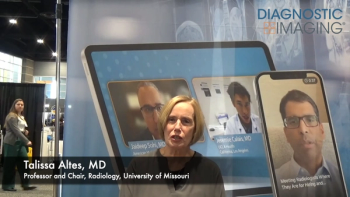
Modular firm supplies units to GE
Scotsman Buildings entered the medical imaging market last yearwith an agreement to supply GE Medical Systems with modular imagingfacilities to service the vendor's U.S. military contracts. Scotsman, a division of the Scotsman Group of Baltimore, isin
Scotsman Buildings entered the medical imaging market last yearwith an agreement to supply GE Medical Systems with modular imagingfacilities to service the vendor's U.S. military contracts.
Scotsman, a division of the Scotsman Group of Baltimore, isin the process of constructing 11 MRI and multimodality modularunits. The units will house GE medical equipment at U.S. militarybases around the world, said Joseph J. O'Donnell, marketing director.
GE has assisted the construction company as it learns to installMRI shielding and meet other medical imaging requirements. Scotsman,for its part, provides the equipment vendor with complete sitesat a rapid pace, according to O'Donnell.
"It is conceivable we could have one of these buildingson site in 60 to 90 days from the time of order," he said.
Scotsman builds its modular units using a process it callsconcurrent construction. The modules are about 95% complete whenthey leave the factory.
"While we are designing and building the unit in a manufacturedsituation, we are also preparing the site to the exact dimensionsof the building," O'Donnell said. "When the buildinggets to the site, the foundation is already there. It is thenjust a matter of marrying up the building with the site. Thisenables us to move the occupant into the building and bring themup and running faster."
Now that Scotsman has acquired the ability to build imagingfacilities, the firm is interested in pursuing more opportunitiesin the field, he said.
"We certainly would like to continue our relationshipwith GE and expand, as opportunities permit, with other manufacturersof MRI," O'Donnell said.
BRIEFLY NOTED:
- Siemens signed a 20-year exclusive agreement this monthto sell and service x-ray equipment made by Transformatoren-undRoentgenwerk GmbH (TUR) of Dresden, in what was East Germany beforereunification. The work will be handled by Siemens Medizintechnikof Leipzig. About 150 TUR employees will be transferred to theLeipzig unit.
The agreement will give the giant German medical systems vendoraccess to TUR's customer base in eastern Germany. The two firmsare discussing possible cooperation in manufacturing imaging equipment.
- Mallinckrodt Medical of St. Louis signed exclusive worldwideagreements with University Hospital Dijkzigt of Rotterdam lastmonth. The medical imaging pharmaceutical company will develop,produce and market a radiopharmaceutical agent for cancer imaging.
The agent is based on Sandostatin, a drug recently introducedby Sandoz that is a derivative of the naturally occurring peptidesomatostatin. Clinical work indicates that radiolabeled somatostatinderivatives may bind to tumor cells with somatostatin receptors.These include endocrine tumors and tumors found in the lung, breastand lymph nodes, Mallinckrodt said.
Mallinckrodt estimates the worldwide nuclear medicine radiopharmaceuticalmarket at $500 million in annual sales. The imaging company predictsthat this market will double in size over the next five years.
Newsletter
Stay at the forefront of radiology with the Diagnostic Imaging newsletter, delivering the latest news, clinical insights, and imaging advancements for today’s radiologists.




























